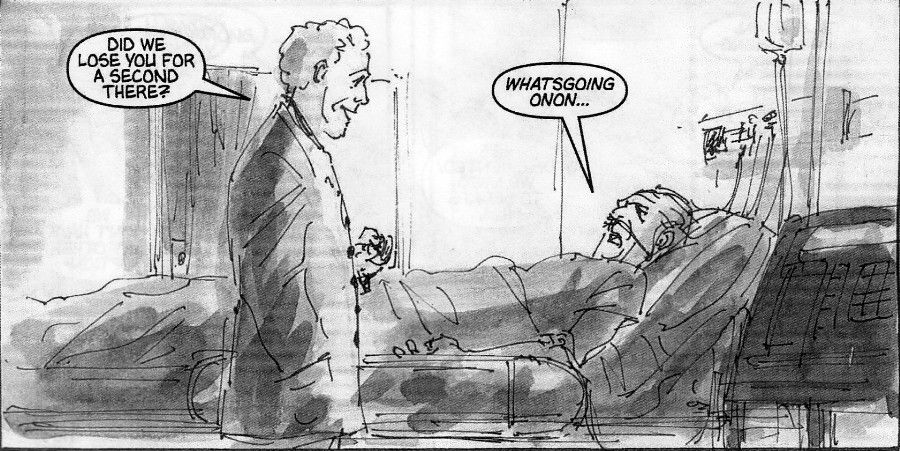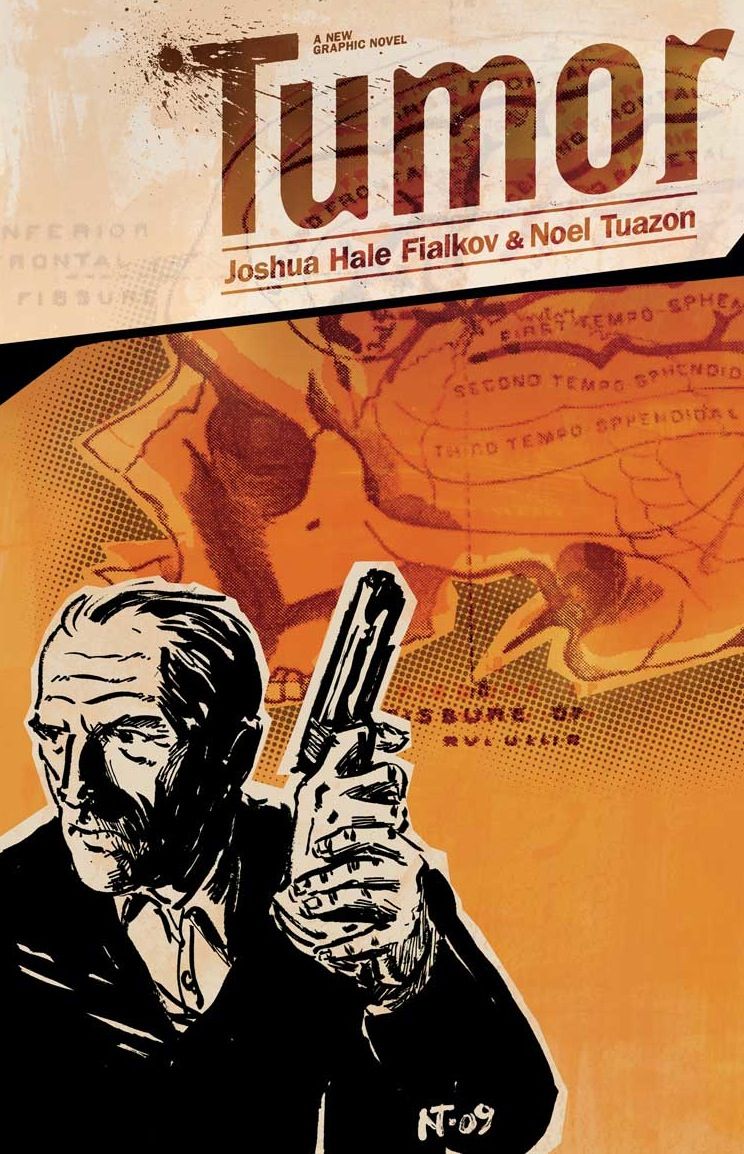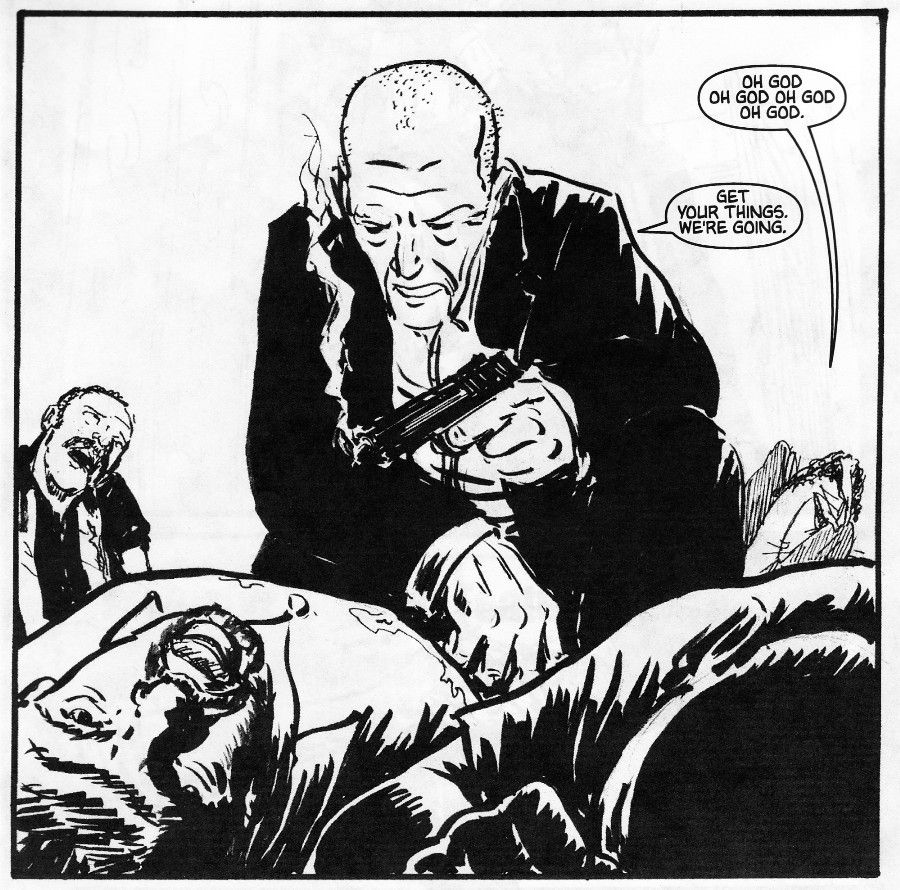Written by Joshua Hale Fialkov; Illustrated by Noel Tuazon
Archaia; $14.95
Tumor isn't exactly the kind of comic I usually pick to talk about here. The gangsters aren't monkeys and the cops don't wear jetpacks. It's a mystery, but it's not a murder mystery. It is, however, exciting to read and - though dark at times and touching at others - a great deal of fun. It's a crime comic - noir in every sense of the word - and the emotional depth that Fialkov and Tuazon give the main character makes it an engrossing experience I didn't want to finish. So while it may not be a big adventure comic, it is excellent.
It's the story of an elderly private investigator named Frank Armstrong who's hired by a crime lord named Gibson to find his missing daughter. Obviously it's not going to be as simple as that and as Frank begins his investigation he starts to ask questions about Gibson's motivations for finding the girl. There's rumors that she ran off with some money. Is Gibson trying to get her out of trouble or planning to kill her? How is Frank's old cop pal involved? Hell, how are all the cops in LA involved for that matter?
Answering these questions would be hard enough without the brain tumor Frank's carrying around. He's in his last days, struggling to stay on his feet, fighting the seizures that are coming more and more frequently, and helpless against the hallucinations and memories that threaten to overtake him. It doesn't help that the girl he's looking for looks a lot like Frank's dead wife. Or that the situation with Gibson's daughter seems to mirror the events that led to Frank's wife's death. With Frank so sick, he's having a hard time keeping it all straight. Past and present are merging.
We're told that that's a symptom of Frank's condition. "Time becomes fluid." And in a genius move that I wouldn't have thought anyone but Christopher Nolan could pull off, Fialkov and Tuazon effectively pull the reader into Frank's screwed-up perception. The narrative jumps all over the place. Frank is on his way to meet Gibson, he's in the hospital, he's meeting with Gibson, he's talking to his wife, he's back in the hospital, he's working the case. All of this floods into each other and merges. It can feel overwhelming, but that's really the point and Tuazon helps keep it separated by using different art styles for some of the points in the timeline. Not so many that you always know exactly where you are, but enough to give you a handhold and keep you from giving up. The idea is to keep the reader almost as disoriented as Frank and it works just as well here as it did in Memento.
I've got to say this as long as I'm talking about Tuazon: he's incredible. His style is very loose and it looks like he's drawing quickly, but he never looks rushed. Every line, fluid as it may be, is exactly where Tuazon wants it. He captures emotion on faces and bodies as seemingly effortlessly as he records the details of a Los Angeles street. That he can do that in multiple styles and with a script this complex is amazing.
Interestingly, as things get more chaotic and complicated for Frank, they get easier for the reader to decipher. As Frank's memories become more and more overwhelming, they also get longer, revealing more about Frank's wife, how she died, and how he failed her. Which in turn makes it all the more important that he not fail the girl who reminds him of her so much.
Five out of five broken-down private eyes.



